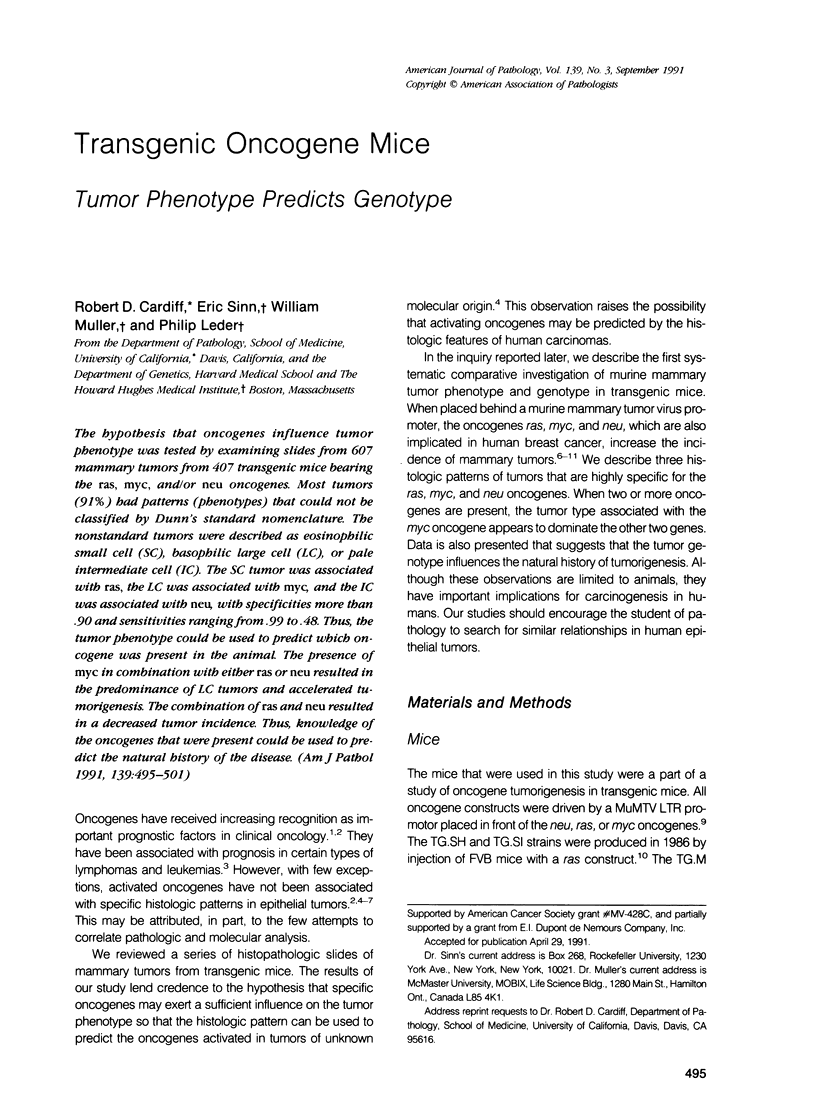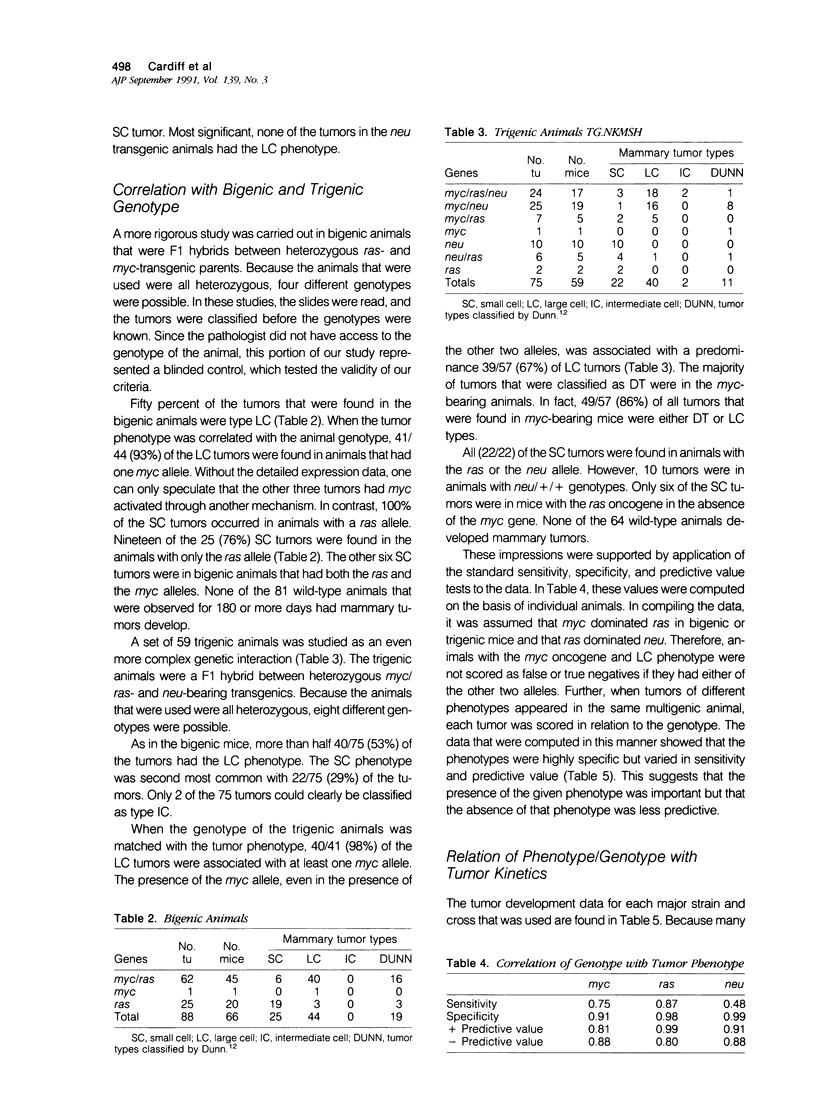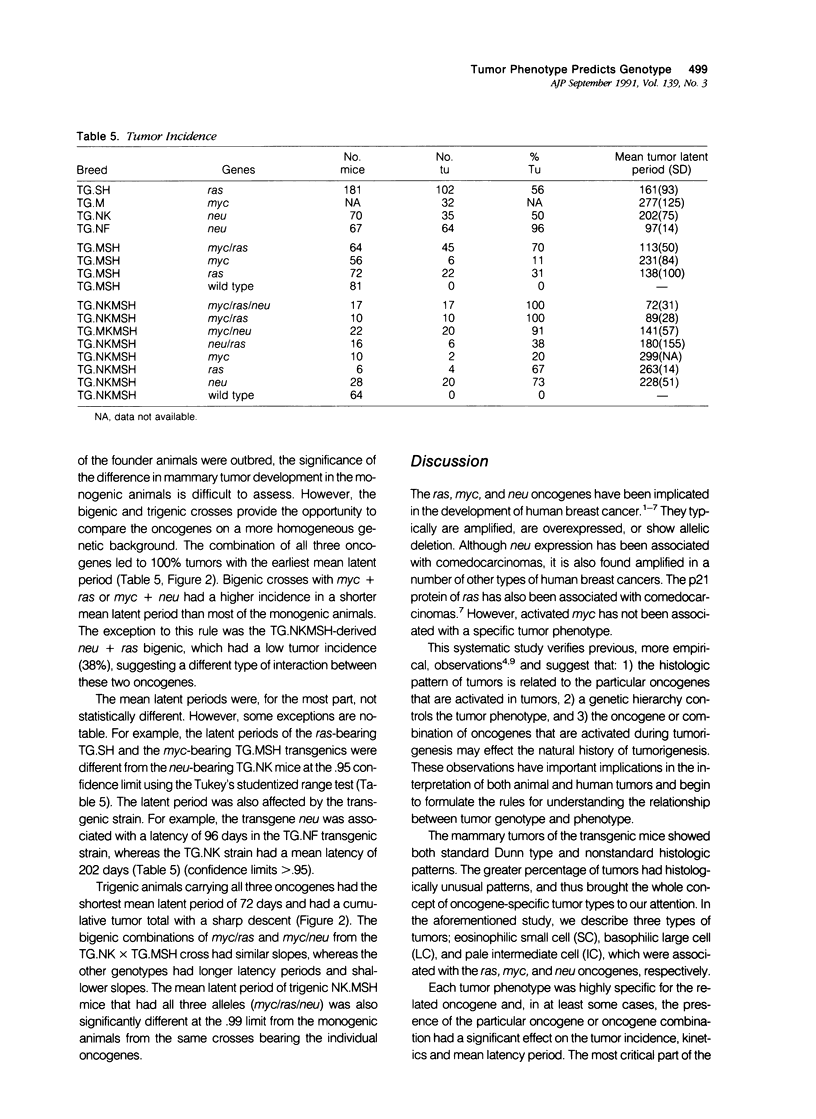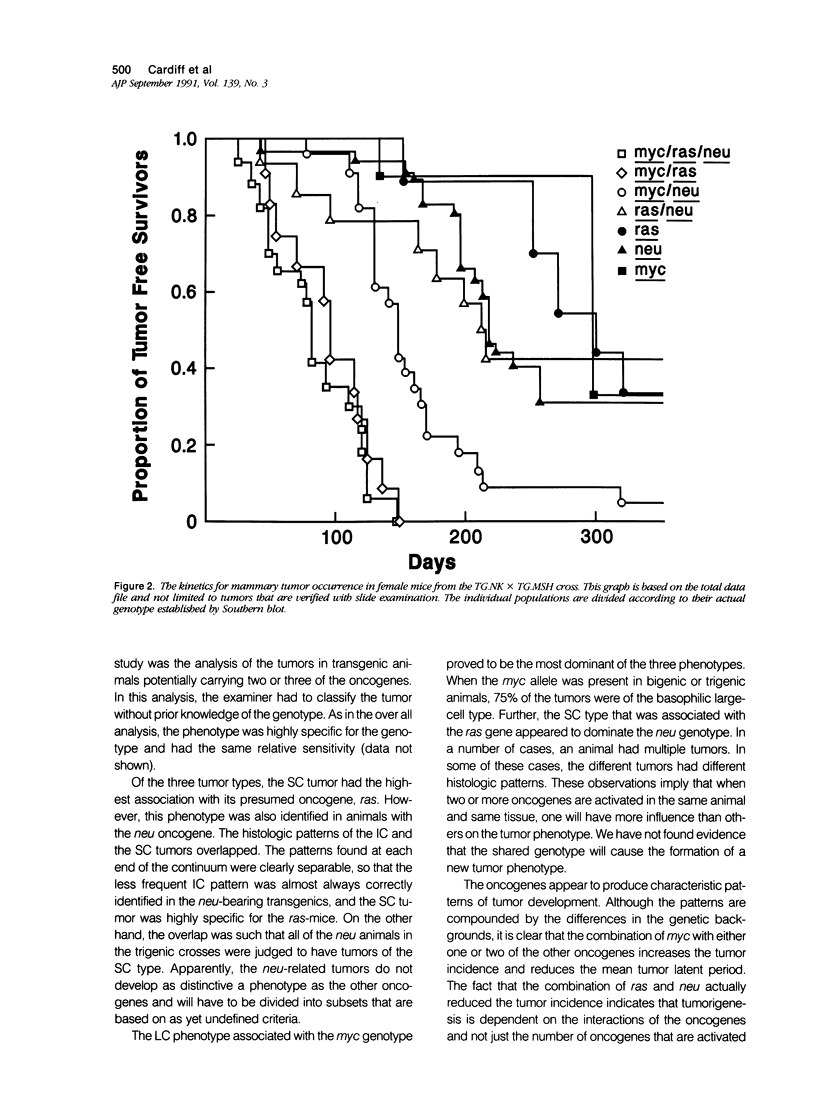Abstract
The hypothesis that oncogenes influence tumor phenotype was tested by examining slides from 607 mammary tumors from 407 transgenic mice bearing the ras, myc, and/or neu oncogenes. Most tumors (91%) had patterns (phenotypes) that could not be classified by Dunn's standard nomenclature. The nonstandard tumors were described as eosinophilic small cell (SC), basophilic large cell (LC), or pale intermediate cell (IC). The SC tumor was associated with ras, the LC was associated with myc, and the IC was associated with neu, with specificities more than .90 and sensitivities ranging from .99 to .48. Thus, the tumor phenotype could be used to predict which oncogene was present in the animal. The presence of myc in combination with either ras or neu resulted in the predominance of LC tumors and accelerated tumorigenesis. The combination of ras and neu resulted in a decreased tumor incidence. Thus, knowledge of the oncogenes that were present could be used to predict the natural history of the disease.
Full text
PDF






Images in this article
Selected References
These references are in PubMed. This may not be the complete list of references from this article.
- Barnes D. M. Breast cancer and a proto-oncogene. BMJ. 1989 Oct 28;299(6707):1061–1062. doi: 10.1136/bmj.299.6707.1061. [DOI] [PMC free article] [PubMed] [Google Scholar]
- Borg A., Linell F., Idvall I., Johansson S., Sigurdsson H., Fernö M., Killander D. HER2/neu amplification and comedo type breast carcinoma. Lancet. 1989 Jun 3;1(8649):1268–1269. doi: 10.1016/s0140-6736(89)92365-9. [DOI] [PubMed] [Google Scholar]
- Cardiff R. D. Cellular and molecular aspects of neoplastic progression in the mammary gland. Eur J Cancer Clin Oncol. 1988 Jan;24(1):15–20. doi: 10.1016/0277-5379(88)90171-x. [DOI] [PubMed] [Google Scholar]
- Cline M. J. Molecular diagnosis of human cancer. Lab Invest. 1989 Oct;61(4):368–380. [PubMed] [Google Scholar]
- Muller W. J., Sinn E., Pattengale P. K., Wallace R., Leder P. Single-step induction of mammary adenocarcinoma in transgenic mice bearing the activated c-neu oncogene. Cell. 1988 Jul 1;54(1):105–115. doi: 10.1016/0092-8674(88)90184-5. [DOI] [PubMed] [Google Scholar]
- Pattengale P. K., Stewart T. A., Leder A., Sinn E., Muller W., Tepler I., Schmidt E., Leder P. Animal models of human disease. Pathology and molecular biology of spontaneous neoplasms occurring in transgenic mice carrying and expressing activated cellular oncogenes. Am J Pathol. 1989 Jul;135(1):39–61. [PMC free article] [PubMed] [Google Scholar]
- Querzoli P., Marchetti E., Bagni A., Marzola A., Fabris G., Nenci I. Expression of p21 ras gene products in breast cancer relates to histological types and to receptor and nodal status. Breast Cancer Res Treat. 1988 Sep;12(1):23–30. doi: 10.1007/BF01805736. [DOI] [PubMed] [Google Scholar]
- Sinn E., Muller W., Pattengale P., Tepler I., Wallace R., Leder P. Coexpression of MMTV/v-Ha-ras and MMTV/c-myc genes in transgenic mice: synergistic action of oncogenes in vivo. Cell. 1987 May 22;49(4):465–475. doi: 10.1016/0092-8674(87)90449-1. [DOI] [PubMed] [Google Scholar]
- Slamon D. J., Godolphin W., Jones L. A., Holt J. A., Wong S. G., Keith D. E., Levin W. J., Stuart S. G., Udove J., Ullrich A. Studies of the HER-2/neu proto-oncogene in human breast and ovarian cancer. Science. 1989 May 12;244(4905):707–712. doi: 10.1126/science.2470152. [DOI] [PubMed] [Google Scholar]
- Stewart T. A., Pattengale P. K., Leder P. Spontaneous mammary adenocarcinomas in transgenic mice that carry and express MTV/myc fusion genes. Cell. 1984 Oct;38(3):627–637. doi: 10.1016/0092-8674(84)90257-5. [DOI] [PubMed] [Google Scholar]
- van de Vijver M. J., Peterse J. L., Mooi W. J., Wisman P., Lomans J., Dalesio O., Nusse R. Neu-protein overexpression in breast cancer. Association with comedo-type ductal carcinoma in situ and limited prognostic value in stage II breast cancer. N Engl J Med. 1988 Nov 10;319(19):1239–1245. doi: 10.1056/NEJM198811103191902. [DOI] [PubMed] [Google Scholar]



